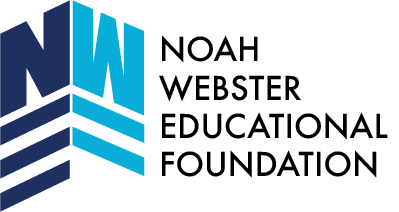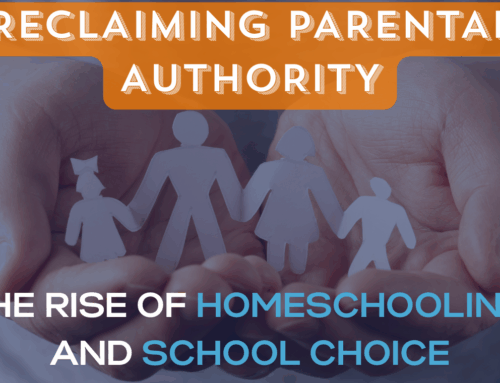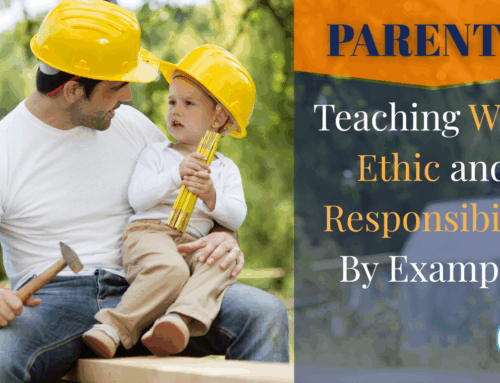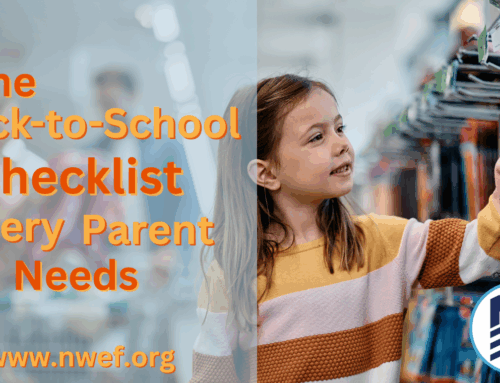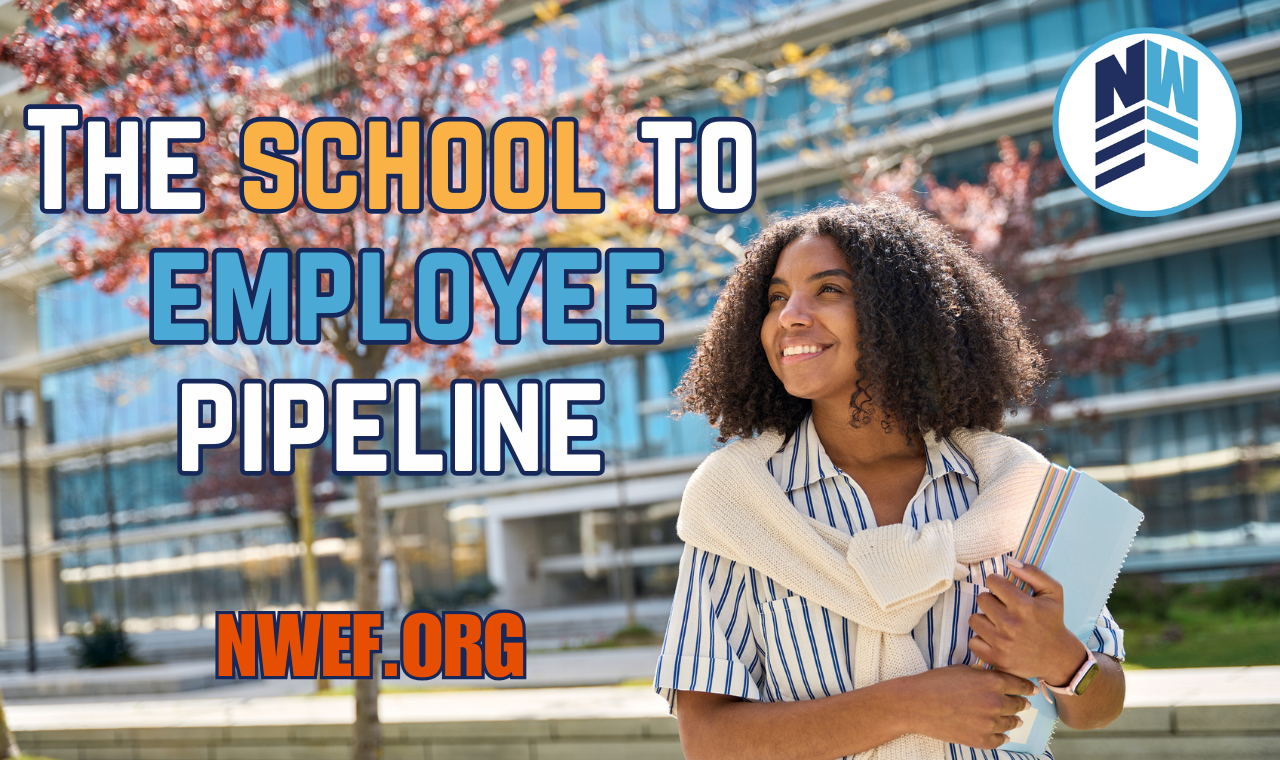
The School To Employment Pipeline
On the horizon, a young man appears. His tri-cornered hat is crooked, his white stockings dirty, and his arms are full of instruments and papers. He’s scrambled up the mountainside and now stands at the top of the ridge, gazing around him in frustration.
His eyes catch a glimpse of the spot he’s searching for. He eagerly sprints forward, his face set in a concentrated scowl. As rocks scatter underneath his feet, he juggles the papers and tools jostling in his grasp. Finally, he reaches his destination and cautiously lays everything down. He slowly and carefully begins setting up his equipment for the job.
The young man we’re watching is 17-year-old George Washington. Despite the difficulties in his early life, including the early loss of his father, George began his career as a surveyor with a solid foundation for his job through a specific vocational focus in school.
Throughout history, it has not been uncommon for young men and women to begin their careers at a very young age. Laura Ingalls obtained her teaching certificate and began teaching at age 16. Ben Franklin started his apprenticeship as a printer at age 12. John Quincy Adams began his political career early, serving as a diplomat to Russia at 14. By 16, he was acting as a secretary for the U.S. minister to Prussia.
When we study significant historical figures, we often find that their backgrounds were as usual and mundane as any of ours. Most of them weren’t groomed for their role in shaping the world. They were ordinary people who managed great things.
Two commonalities between many great figures in history often ring true:
- They had an excellent education that laid the necessary foundations for their career
- They chose their vocation early in life – whether by choice or necessity – and prepared for that career
Let’s examine why these two points are important and how they affect education today.
School vs. Education
We often confuse schooling and education. We mash them together and assume they are the same thing. In reality, they are vastly different; one is significantly more valuable than the other. As Mark Twain once joked, “I never let my schooling get in the way of my education.”
In short, schooling consists of instruction or training. Although school may include an education, it certainly doesn’t guarantee it.
On the other hand, education encompasses the entire learning experience. While it can include knowledge obtained in a formal school setting, it’s not limited to the classroom environment.
This distinction is important when we look at history for guidance, and we see historical patterns we could adopt and adapt today.
Vocational And Technical Training
Vocational education was once a vital aspect of the high school experience. It prepared students for adulthood and equipped them with practical skills for the job market after graduation.
Sadly, public education has taken a steep shift away from life preparedness and has leaped towards a predominantly academic focus. The iconic shop class has been shoved into the far background, and in its place is a strong emphasis on college preparatory courses.
This strategy has not worked as effectively as intended.
The Thomas B. Fordham Institute notes, “Unfortunately for millions of American students, CTE [career and technical education] is not a meaningful part of their high school experience. Instead, they are shuffled through large, bureaucratized schools that do not adequately prepare them for anything, be it college, career, or both.”
Public education has shifted dramatically, leaving the majority of young adults with sky-high student debt and largely unprepared for the reality of earning a living.
Unintended Consequences
The simple fact is that college is not best for every student. Many students who begin secondary education don’t complete their degree, with approximately a 23% dropout rate. Lack of career and technical education (CTE) options can leave these students underprepared for the job market.
Schooling is often seen as a stepping stone instead of a tool, usually viewed as a mandatory ritual that kids must pass through before their lives begin. Instead, we should see primary education as an adventure of learning, growing, and exploring.
School and primary education should be an unforgettable journey of preparation, molding a knowledgeable adult, and creating an upstanding citizen.
The Thomas B. Fordham Institute weighs in again. “America is an anomaly. In most industrialized countries—nearly all of which outperform us on measures of academic achievement … —students begin preparing for a career while still in high school. Around the world, CTE is not a track away from a successful adulthood, but rather a path towards it.”
To accomplish this in today’s world, we must broaden our scope and resist the urge to focus primarily on academics and college prep. Instead, we should work with our students to actually prepare them for the new ventures beyond graduation day.
Start With Basics
Offer Career and Technical Education
A first step would be to reintroduce technical training into public education as a standard class or credit option. Recent studies suggest that CTE programs can yield positive outcomes.
Career and technical education are linked to reduced rates of high school dropouts and an increase in students who graduate on time. Furthermore, students exposed to CTE often experience higher academic motivation, academic engagement, grades, career self-efficacy, college aspirations, and employability skills.
Get Parents Involved
Here’s where the rubber meets the road between education and schooling.
Did you know that parental involvement in education influences student success? Whether attending PTA meetings, helping at school functions, or homeschooling, parental involvement is a vital part of the education puzzle.
Parents must supplement public or private education with home instruction to ensure their children’s well-rounded education.
Here are a few ideas on how to do this:
- Talk. Open a dialogue with your child about their interests and hopes for their future. Encourage them to think through the details of what they want their life to look like and what steps they need to accomplish to get there, including the basics for a career plan.
- Supplement. Cultivate opportunities for your child to develop the necessary skills for their desired career. Hopefully, attending school will help with this, but it’s not guaranteed. That’s our job as parents.
- Instill life skills. We’ve all heard the jokes about learning important lessons like advanced math skills in high school and how happy we are that we ignored petty things like how to file taxes or cook a healthy meal. The simple truth is that schools’ academic push has crowded out vital life skills our kids need. As parents, we must ensure we fill the educational gaps at home. Regardless of your child’s career, these are skills everyone needs.
Educational Career Prep
Dual enrollment is an excellent option for many students who want to earn a college degree. Many students aren’t as familiar with the fact that many technical colleges offer the same programs. Students can dual enroll while in high school to work toward their certificate or licensing.
Apprenticeship or trade school partnerships may be available for students who wish to learn a trade. Apprenticeship programs are a vital step to becoming a skilled tradesman (or woman), and some schools work with local businesses to allow students to begin an apprenticeship program while still in high school. Trade school partnerships offer similar programs as dual enrollment into a technical college.
Work-based learning programs are another option to prepare students for life after graduation. These programs allow students to obtain real-world experience through internships, co-ops, or shadowing opportunities in a trade.
On an overarching note, studies show that early employment during high school has long-lasting career benefits, including higher income.
Community Partnerships
Collaboration between the educational and private sectors is becoming increasingly necessary. The skilled trades have begun to suffer as a growing labor shortage deepens in those industries. When schools partner with local businesses, they create opportunities for students to open the door and explore their options.
The state of Wyoming has been creating programs to accomplish this with its Wyoming Innovative Partnership Programs. The Wyoming Department of Education has collaborated with businesses around the state to meet the needs of the skilled workforce and students. Through educational initiatives, Wyoming is proving the value of setting students up for career success, and hopefully initiatives like theirs will become more commonplace.
The Pipeline
While we may not want to return to the “old days,” where kids stopped school at 12 and began adulthood at 13, it’s possible that in today’s world, adulthood is postponed for too long and then dumped on students without the right skills or tools to succeed.
Education prepares students for real life, giving them real-world skills and a sense of direction and purpose in their future. In many cases, the American school experience does not accomplish this.
High school graduates should exit high school with the skills and vision necessary to begin their lives. Primary education should provide a school-to-employment pipeline for those who want it, setting students up for career success and advancement.
It’s time to reevaluate our schools, examine the goal of public education, and restructure our curriculum and programs to effectively accomplish that goal.
